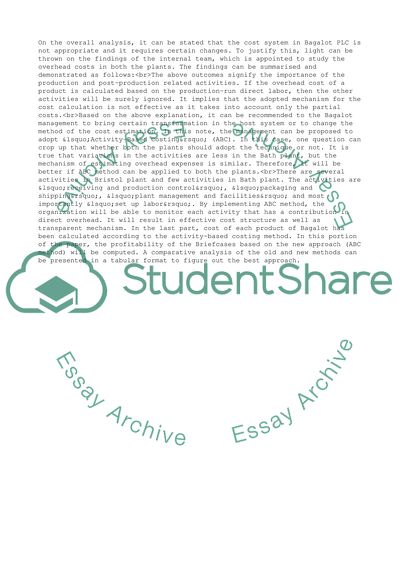Cite this document
(“The Cost Accounting System of Bagalot PLC Coursework”, n.d.)
Retrieved from https://studentshare.org/management/1574915-a-case-study-for-bagalot-plc-company-in-management-and-measurement-performance-accounting-and-cost
Retrieved from https://studentshare.org/management/1574915-a-case-study-for-bagalot-plc-company-in-management-and-measurement-performance-accounting-and-cost
(The Cost Accounting System of Bagalot PLC Coursework)
https://studentshare.org/management/1574915-a-case-study-for-bagalot-plc-company-in-management-and-measurement-performance-accounting-and-cost.
https://studentshare.org/management/1574915-a-case-study-for-bagalot-plc-company-in-management-and-measurement-performance-accounting-and-cost.
“The Cost Accounting System of Bagalot PLC Coursework”, n.d. https://studentshare.org/management/1574915-a-case-study-for-bagalot-plc-company-in-management-and-measurement-performance-accounting-and-cost.


